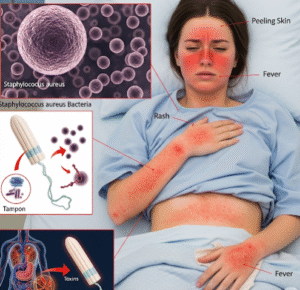Overview
Ocular herpes, also known as eye herpes, is an eye infection caused by the herpes simplex virus (HSV)—most commonly HSV-1, the same virus responsible for cold sores. It can affect different parts of the eye, including the eyelids, conjunctiva, cornea, retina, and even the optic nerve, potentially leading to vision loss if left untreated.
This condition is recurrent, meaning once the virus enters the body, it remains dormant and can reactivate later due to certain triggers like stress, illness, or sun exposure.
What is Ocular Herpes?
Ocular herpes is a viral infection of the eye caused by the herpes simplex virus. It ranges in severity from mild conjunctivitis (pink eye) to more serious corneal infections known as herpes simplex keratitis. In severe cases, it can involve deeper layers of the eye and result in scarring, chronic inflammation, and blindness.
The infection is not always transmitted through direct contact; in many cases, the virus becomes active from a previous latent infection.
Symptoms
Symptoms of ocular herpes depend on the part of the eye involved and the severity of the infection. Common signs include:
- Redness of the eye
- Eye pain or soreness
- Watery discharge or tearing
- Blurred vision
- Sensitivity to light (photophobia)
- Swelling of the eyelids
- Foreign body sensation in the eye
- Recurrent episodes with worsening symptoms over time
In more advanced cases:
- Corneal ulcers or scarring
- Decreased vision or vision loss
- Floaters or flashes (if the retina is involved)
Causes
Ocular herpes is most often caused by HSV-1, though HSV-2 (more commonly associated with genital herpes) can also cause eye infections in rare cases. The virus enters the body through mucous membranes or skin, often during childhood, and remains dormant in the nerves. Later, it may reactivate and travel to the eye.
Triggers for reactivation include:
- Stress
- Fever or illness
- Sun exposure or UV light
- Eye trauma or surgery
- Weakened immune system
Risk Factors
People are more likely to develop ocular herpes if they:
- Have a history of cold sores or herpes simplex virus
- Are immunocompromised (e.g., due to HIV, cancer, or immunosuppressive therapy)
- Have undergone eye surgery or injury
- Experience chronic stress or fatigue
- Are exposed to sunlight without eye protection
- Have had a previous episode of ocular herpes
Complications
Without prompt treatment, ocular herpes can cause serious complications:
- Corneal scarring leading to vision loss
- Recurrent infections damaging the eye over time
- Chronic dry eye or inflammation
- Glaucoma due to increased intraocular pressure
- Retinitis or optic neuritis (if deeper tissues are affected)
- Blindness, in severe untreated cases
Prevention
While herpes simplex virus cannot be eliminated from the body, certain steps can reduce the risk of outbreaks and transmission:
- Avoid touching your eyes if you have a cold sore or HSV lesion
- Wash hands frequently
- Do not share towels, eye makeup, or contact lenses
- Use UV-protective sunglasses to prevent flare-ups
- Manage stress levels and get adequate rest
- Avoid known triggers
- If you have a history of ocular herpes, use prescribed antiviral medications to prevent recurrences
Treatment Options in Korea
South Korea provides advanced ophthalmologic care, with specialists in viral eye diseases and corneal disorders.
1. Diagnosis
- Slit-lamp examination: Visual inspection of the cornea and eye structures
- Fluorescein staining: Highlights corneal ulcers or damage
- PCR testing or viral culture (in rare cases)
- Ophthalmologic imaging: To assess damage to internal eye layers
- Visual acuity and pressure tests
2. Medical Treatment
- Antiviral eye drops or ointments (e.g., trifluridine, ganciclovir)
- Oral antivirals (e.g., acyclovir, valacyclovir) for systemic control
- Corticosteroid eye drops (only under medical supervision) to reduce inflammation
- Artificial tears for symptom relief
- Long-term suppressive antiviral therapy for recurrent cases
3. Surgical Options
In cases of significant corneal damage or scarring:
- Corneal transplant (keratoplasty)
- Laser procedures to reduce corneal irregularity
4. Follow-up Care
- Frequent monitoring during and after treatment
- Management of complications such as glaucoma or dry eye
- Patient education on trigger avoidance and eye hygiene
5. Top Hospitals and Eye Centers in Korea
- Severance Eye Hospital (Yonsei University Health System)
- Samsung Medical Center – Department of Ophthalmology
- Asan Medical Center – Corneal and External Eye Disease Clinic
- Seoul National University Hospital – Vision Center
- Kim’s Eye Hospital – Corneal Disease Unit
These facilities offer:
- Specialized viral eye disease management
- Emergency care for severe outbreaks
- Advanced imaging and surgical options
- Multilingual services for international patients













